The history of Puma is a journey through some of the world’s greatest sports achievements of the last fifty years or so. Not only that, but trainers with the sign of the leaping cat with the Puma ‘Form Stripe’ log have been on the feet of most of the cutting-edge youth movements of each generation during that same time. The story of Puma and its founder, Rudolph (Rudi) Dassler, began in Germany in 1948 but, as has been discussed previously, the roots of the company go right back to the 1920s and are inextricably linked with those of adidas, founded by Rudolph’s brother Adolph (Adi). However there more to Puma than a tale of sibling rivalry. Interestingly, Puma is more ready than adidas to shed light on the split of the Dassler brothers, but this will be looked at later.
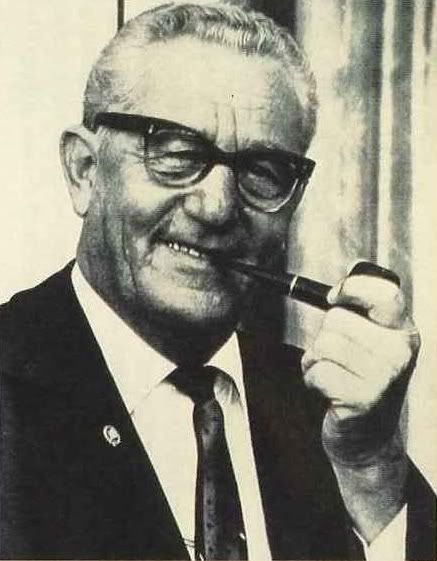
ABOVE One of the Dassler brothers Puma Founder Rudolph Dassler
Back in 1924, in more harmonious times, Rudi and Adi Dassler, the sons of a cobbler, formed the company Gebruder Dassler OHG (Dassler Brothers Ltd) after a period of collaboration on sports shoes development in their hometown of Herzogenaurach, near Nuremberg. ‘You cannot play sports wearing shoes that you would walk around with’ were the words of Puma’s founder, and it was this sentiment that became the driving force behind the sports shoe improvements that the Dassler brothers introduced. After initial success and further substantial growth, trouble broke out between the brothers and they decided to split in 1948, with Rudolph establishing Rudolph Dassler Sports on the side of town, manufacturing shoes under the brand of Puma. It is said that at first Rudolph wanted to call his brand Ruda, but decided to go with the idea of leaping cat instead, and so Puma was born. In 1051, he registered the first version of the Puma logo, which has undergone considerable alterations and updating over the years before settling on the incarnation that we are all so familiar with today.
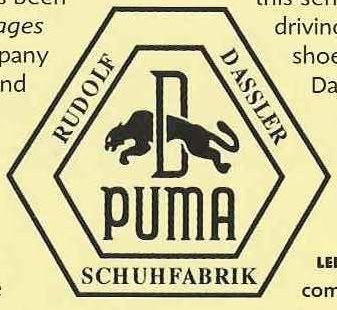
ABOVE The original Puma logo, complete with the ‘leaping cat’
A few years later, in 1958, Puma introduced the now familiar ‘Form Strip’, the logo we see on the side of all Puma shoes to this day. This addition, however, was not simply an aesthetic design feature; its intention was to provide the shoes with extra strength and durability.

ABOVE TOP Early Super Atoms, featuring Puma’s first log
ABOVE BOTTOM Top Fit, with today’s form stripe and logo
The company went from strength to strength, with Puma-clad runners winning gold medals at various Olympic Games and other international sporting events. Puma can also lay claim to being the first brand to utilize Velcro straps in 1968, and it was at this time that Puma and adidas were both making inroads into the American market. These German brands went on to dominate the 1970s and their shoes from this era, such as the Clyde and State/suede, still sell in huge volumes. It is during these years that Puma achieved the type of cultural following that any manufacturer would die for. Puma was particularly favored by the brash, new Hip-Hop ‘tribe’ in the late 1970s/early 1980s. In 1986 Puma change fundamentally, going from a family business to being list on the German stock exchange, and this corresponded with a general slump in sales for the ‘old-skool’ brands such as Puma and adidas during the late 1980s and 1990s as new players Nike and Reebok began to enjoy ‘their moments in the sun’. Recently, by combining old designs with new developments, Puma has started to recover market share and is once more becoming one of the major players.
SPORTS STORIES
It’s reasonable to say that not every brand of training shoes enjoyed the loyalty or success that has been illustrated by Puma, and the company established particularly successful relationships with soccer superstars such as Pele of Brazil, Johan Cruyff of Holland and Diego Maradona of Argentina. Some notable stories are particularly worth the retelling, Johann Cruyff was a sponsored Puma player while, at the same time, his Dutch international team was sponsored by deadly rivals adidas. When Cruyff was playing for his country he would rip off one of the three stripes on his jersey to negate the adidas connection. Such a demonstration would be impossible to imagine with the superstars of today’s game. The world’s greatest and most famous soccer player of all time, Pele, was Puma-clad, and he even developed a range of trainers to go with his endorsement. Pele always make a point of tying his shoe laces just before kick-off during 1970 World Cup to draw attention to his feet for the cameras and the world to see and take note. In a moment that enormous cultural significance, American athletes Tommy Smith and Jim Hines gave black-power salutes when receiving their medals at the 1968 Mexico Olympics. Their Puma sneakers were symbolically left on the rostrum and were forever tied to this famous statement.
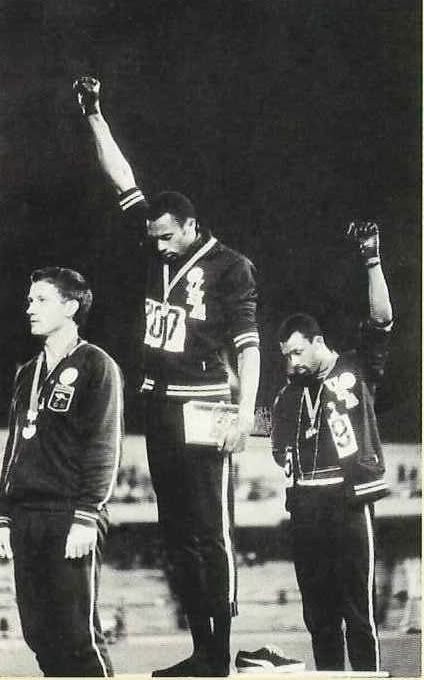
ABOVE Tommy Smith and Jim Hines giving the black power salute in 1968
SIBLING RIVALRY
On either band of the Aurach River in Bavaria are the headquarters of the two Dassler giants. The extraordinary story of the Dassler family holds all the passion, bitterness and suspense of a real-life soap. ‘Dallas on the River Aurach’ they call it locally. The personal bitterness that has divided this family for nearly 50 years is equaled only by their ruthless commercial rivalry. According to Puma, the story of the Dassler brothers goes something like this.
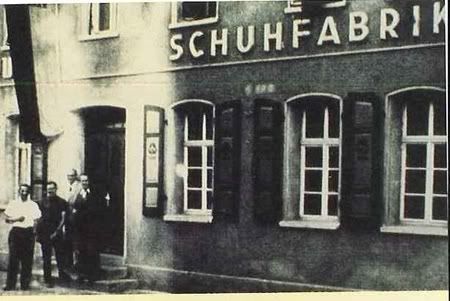
ABOVE The original Puma factory in 1948
Both companies emerged from genius of Herzogenaurach village shoemaker, Adi Dassler and his brother Rudolph. As they struggled to put the business back on its feet after the war their partnership ended in a quarrel so violent that the brothers never spoke to each other for the rest of their lives.
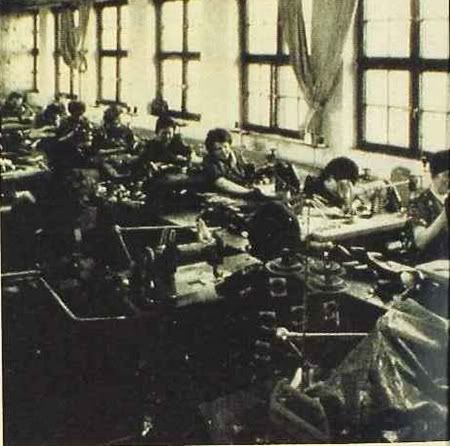
ABOVE At the production line inside
Just how it happened remains a closely guarded secret. Whatever the reason, the result was that Rudolph crossed the river and founded Puma. On the opposite bank, Adi coined the name adidas for his company and so their commercial rivalry began. Frank Dassler, Rudolph’s grandson, stunned family members when he crossed the river and moved into a new home on adidas territory. ‘I broke the rules,’ says Frank. ‘I would hear stories of…the families refusing to use same butcher’. Adi and Rudolph are now both dead, but the rivalry continues to this day.

ABOVE One of the Dassler brothers Puma Founder Rudolph Dassler
Back in 1924, in more harmonious times, Rudi and Adi Dassler, the sons of a cobbler, formed the company Gebruder Dassler OHG (Dassler Brothers Ltd) after a period of collaboration on sports shoes development in their hometown of Herzogenaurach, near Nuremberg. ‘You cannot play sports wearing shoes that you would walk around with’ were the words of Puma’s founder, and it was this sentiment that became the driving force behind the sports shoe improvements that the Dassler brothers introduced. After initial success and further substantial growth, trouble broke out between the brothers and they decided to split in 1948, with Rudolph establishing Rudolph Dassler Sports on the side of town, manufacturing shoes under the brand of Puma. It is said that at first Rudolph wanted to call his brand Ruda, but decided to go with the idea of leaping cat instead, and so Puma was born. In 1051, he registered the first version of the Puma logo, which has undergone considerable alterations and updating over the years before settling on the incarnation that we are all so familiar with today.

ABOVE The original Puma logo, complete with the ‘leaping cat’
A few years later, in 1958, Puma introduced the now familiar ‘Form Strip’, the logo we see on the side of all Puma shoes to this day. This addition, however, was not simply an aesthetic design feature; its intention was to provide the shoes with extra strength and durability.

ABOVE TOP Early Super Atoms, featuring Puma’s first log
ABOVE BOTTOM Top Fit, with today’s form stripe and logo
The company went from strength to strength, with Puma-clad runners winning gold medals at various Olympic Games and other international sporting events. Puma can also lay claim to being the first brand to utilize Velcro straps in 1968, and it was at this time that Puma and adidas were both making inroads into the American market. These German brands went on to dominate the 1970s and their shoes from this era, such as the Clyde and State/suede, still sell in huge volumes. It is during these years that Puma achieved the type of cultural following that any manufacturer would die for. Puma was particularly favored by the brash, new Hip-Hop ‘tribe’ in the late 1970s/early 1980s. In 1986 Puma change fundamentally, going from a family business to being list on the German stock exchange, and this corresponded with a general slump in sales for the ‘old-skool’ brands such as Puma and adidas during the late 1980s and 1990s as new players Nike and Reebok began to enjoy ‘their moments in the sun’. Recently, by combining old designs with new developments, Puma has started to recover market share and is once more becoming one of the major players.
SPORTS STORIES
It’s reasonable to say that not every brand of training shoes enjoyed the loyalty or success that has been illustrated by Puma, and the company established particularly successful relationships with soccer superstars such as Pele of Brazil, Johan Cruyff of Holland and Diego Maradona of Argentina. Some notable stories are particularly worth the retelling, Johann Cruyff was a sponsored Puma player while, at the same time, his Dutch international team was sponsored by deadly rivals adidas. When Cruyff was playing for his country he would rip off one of the three stripes on his jersey to negate the adidas connection. Such a demonstration would be impossible to imagine with the superstars of today’s game. The world’s greatest and most famous soccer player of all time, Pele, was Puma-clad, and he even developed a range of trainers to go with his endorsement. Pele always make a point of tying his shoe laces just before kick-off during 1970 World Cup to draw attention to his feet for the cameras and the world to see and take note. In a moment that enormous cultural significance, American athletes Tommy Smith and Jim Hines gave black-power salutes when receiving their medals at the 1968 Mexico Olympics. Their Puma sneakers were symbolically left on the rostrum and were forever tied to this famous statement.

ABOVE Tommy Smith and Jim Hines giving the black power salute in 1968
SIBLING RIVALRY
On either band of the Aurach River in Bavaria are the headquarters of the two Dassler giants. The extraordinary story of the Dassler family holds all the passion, bitterness and suspense of a real-life soap. ‘Dallas on the River Aurach’ they call it locally. The personal bitterness that has divided this family for nearly 50 years is equaled only by their ruthless commercial rivalry. According to Puma, the story of the Dassler brothers goes something like this.

ABOVE The original Puma factory in 1948
Both companies emerged from genius of Herzogenaurach village shoemaker, Adi Dassler and his brother Rudolph. As they struggled to put the business back on its feet after the war their partnership ended in a quarrel so violent that the brothers never spoke to each other for the rest of their lives.

ABOVE At the production line inside
Just how it happened remains a closely guarded secret. Whatever the reason, the result was that Rudolph crossed the river and founded Puma. On the opposite bank, Adi coined the name adidas for his company and so their commercial rivalry began. Frank Dassler, Rudolph’s grandson, stunned family members when he crossed the river and moved into a new home on adidas territory. ‘I broke the rules,’ says Frank. ‘I would hear stories of…the families refusing to use same butcher’. Adi and Rudolph are now both dead, but the rivalry continues to this day.








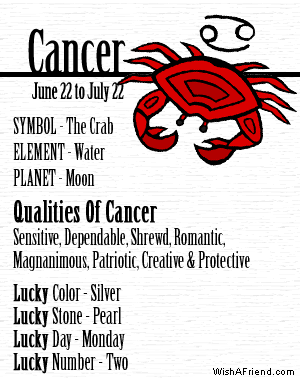
0 comments:
Post a Comment